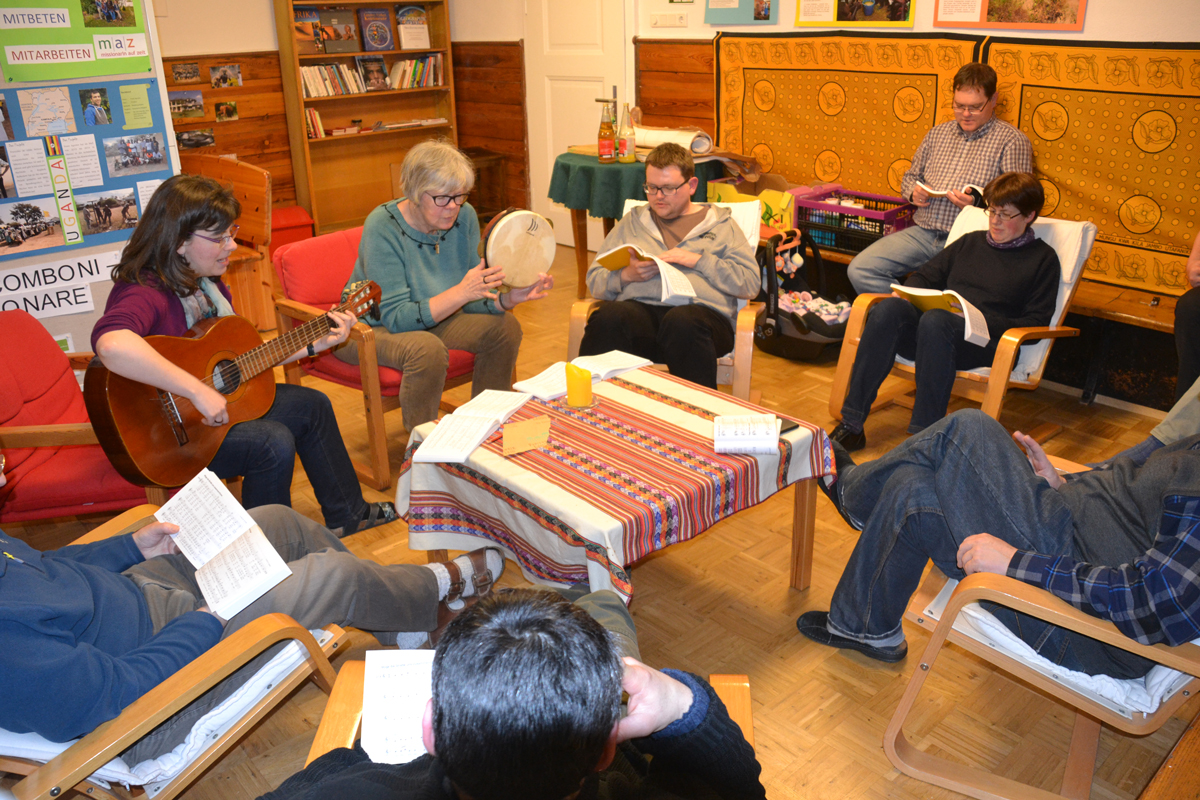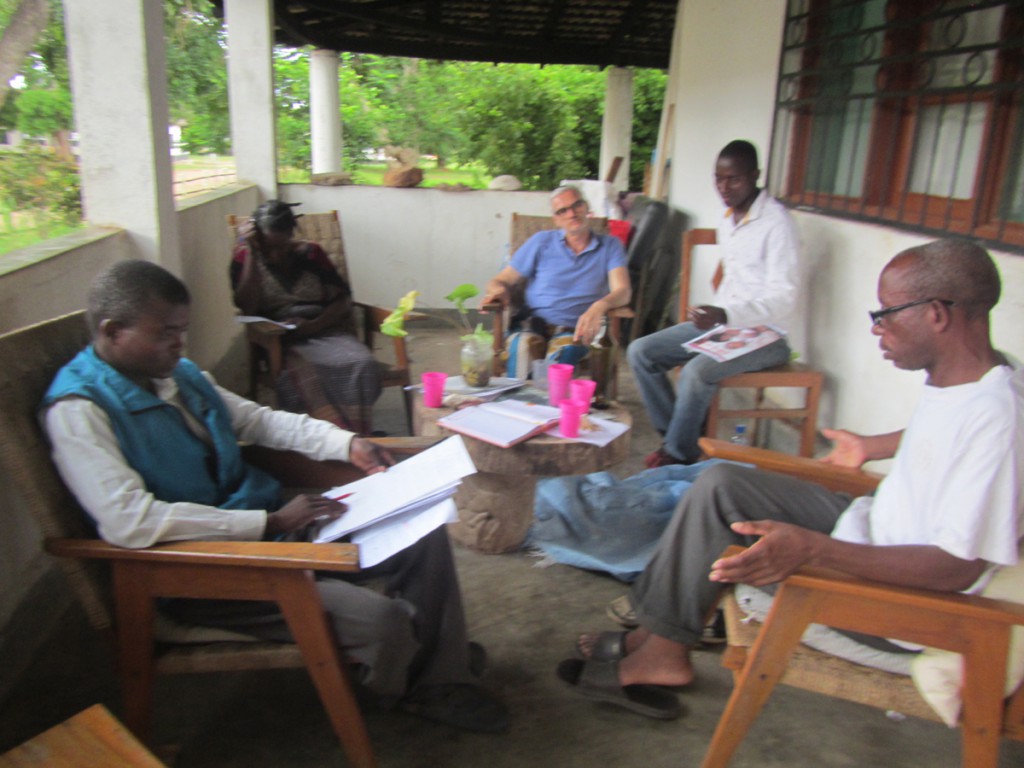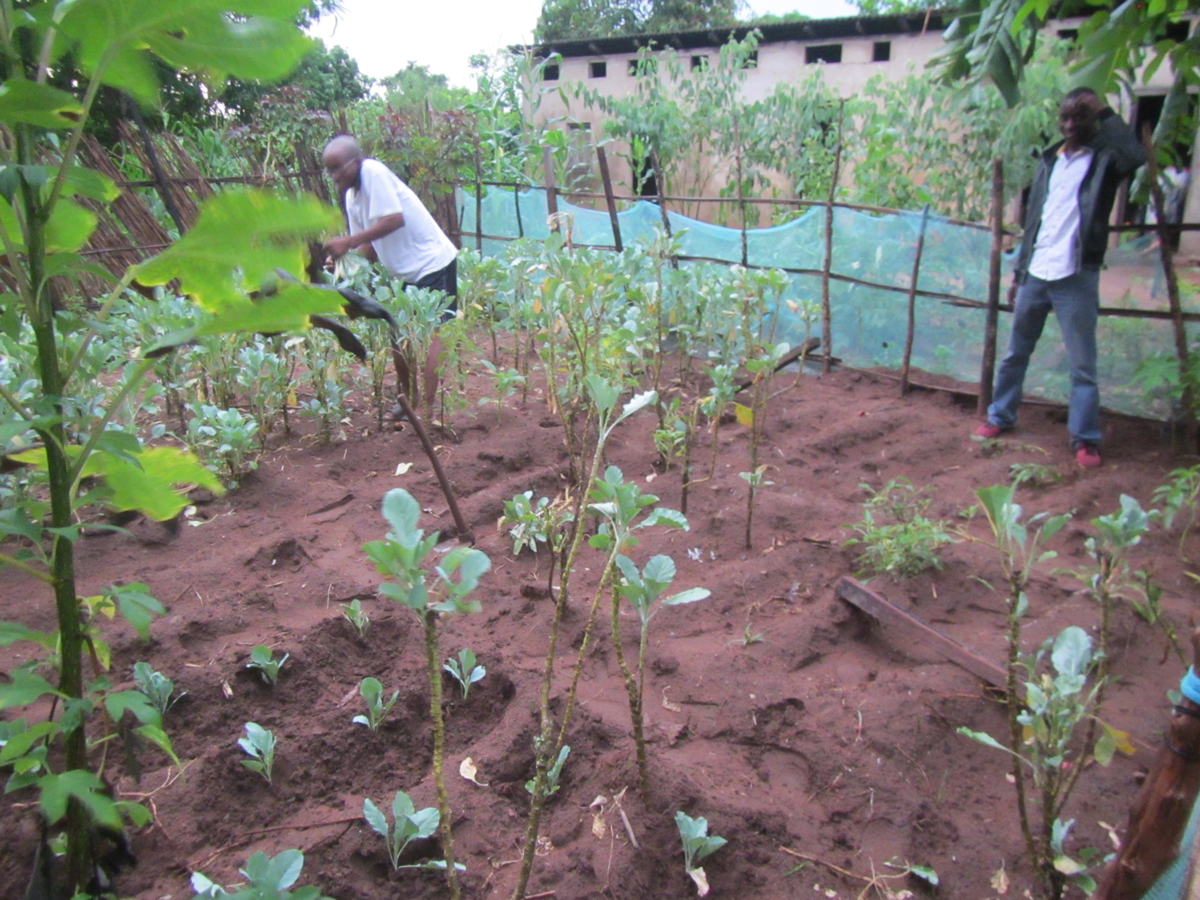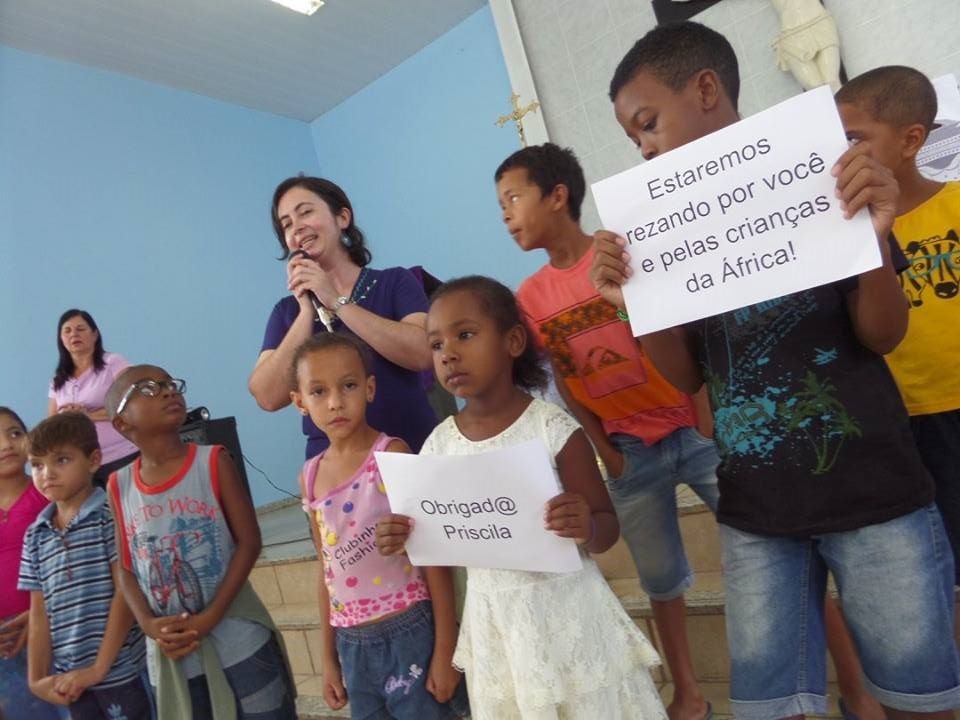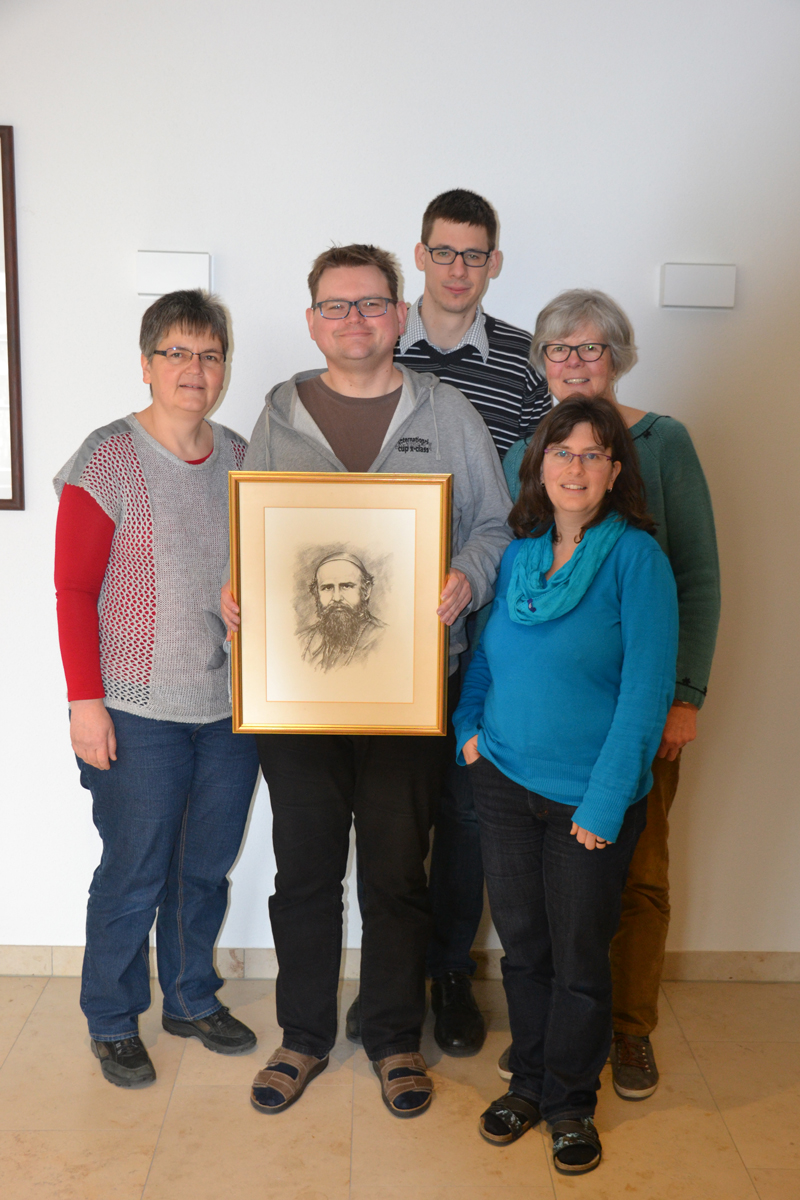 Meeting of the Comboni Lay Missionaries (CLM) in the house of Nuremberg from 18 to 21 March 2016
Meeting of the Comboni Lay Missionaries (CLM) in the house of Nuremberg from 18 to 21 March 2016
On Friday, March 18, it was time: the CLM came from all corners of Germany turn to our meeting. For four days, the group has prepared a stand for the presentation of the Comboni Family at the national meeting of Catholics in Leipzig and at the same time we were dedicated to see the preparing text for the continental assembly that Europeans CLM will have in Portugal.
The first came very motivated on Thursday night, and the last one arrived on late Friday night, with an ark in luggage. It was an atmosphere of joy where we were all willing and eager to celebrate this time together and the possibility of doing different activities. Since the last meetings were characterized by a more theoretical work, reflection and exchange of ideas, for this meeting we schedule to make more practical, concrete and creative works.
Saturday morning began with Mass with the Comboni Missionaries and the Pauline Sisters. Empowered by breakfast we face the two themes of the meeting: the national meeting of Catholics and the European CLM meeting. With great joy we welcomed the new “member” (newborn) Stella, along with their parents Irene and Ulrich, who participated with much encouragement.
With the help of a background song we express thoughts and ideas on the subject and theme of the meeting of Catholics, “Look, here is the man!” We put into practice the ideas for the stand of the Comboni Family, we also realized a game linked to globalization, rehearsing songs and prepare the material. We loved put African and American clothes on the mannequins and make posters for them.
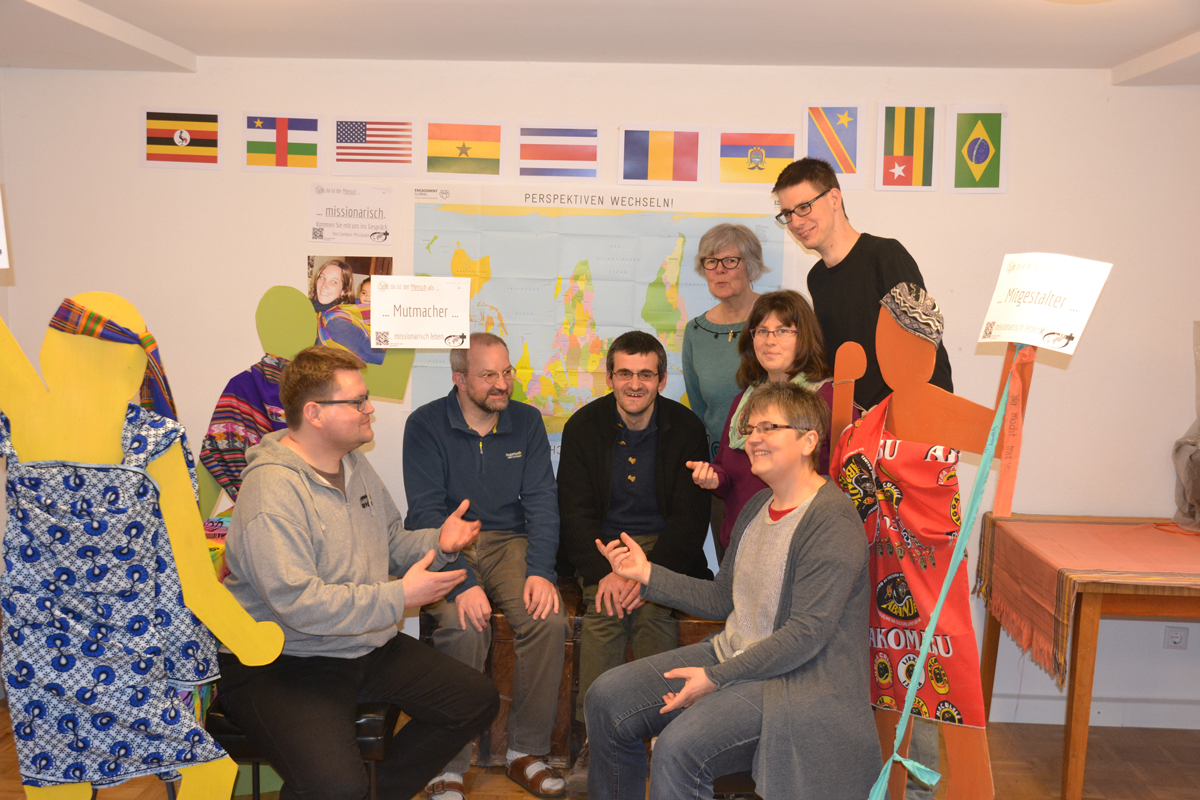 On Sunday, we participated with the community in the Mass on Palm Sunday. During the Mass, topical issues as slavery, the situation of migrants and the World Church were spoken. Children put symbols on the altar while adults told the passion of Christ. We could recognize issues quite linked to our way as CLM.
On Sunday, we participated with the community in the Mass on Palm Sunday. During the Mass, topical issues as slavery, the situation of migrants and the World Church were spoken. Children put symbols on the altar while adults told the passion of Christ. We could recognize issues quite linked to our way as CLM.
From the information on the history of the international CLM movement and the preparatory text for the continental meeting of the CLM in Portugal came out much discussion on different topics, especially on the challenges of our CLM group. There is progress on our way and a long road ahead…
At night, we had a prayer together with the members of the local community in the house of the Comboni Missionaries. Afterwards we rededicate ourselves to creative work. Some made a small brochure on our CLM group.
On Monday, we left aside the work and made a special visit to the center of Nuremberg. A man who had lived on the street guided us by the city around the places where the homeless and supporting institutions are. He talked about his experiences of life and struggle. We also talked with social workers of “Lilith,” “Kassandra” and the ecumenical point “that serve women with drug problems, prostitutes and homeless.
This weekend we have been enriched by the gifts and commitment of each of our fellow CLM. Sharing: Look, there is the man – individual and group member; creative, full of ideas, solidary – living the mission.
Barbara Ludewig




